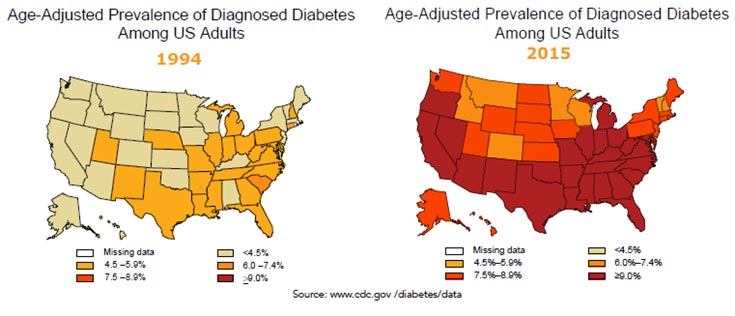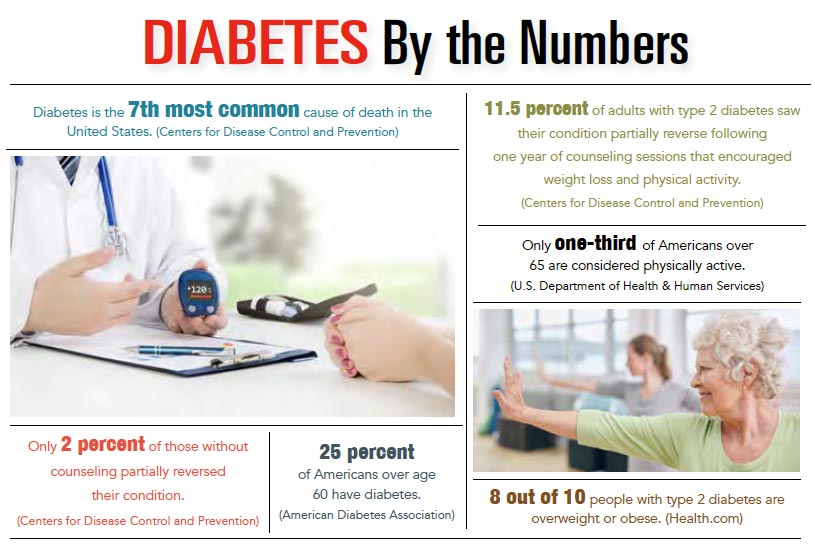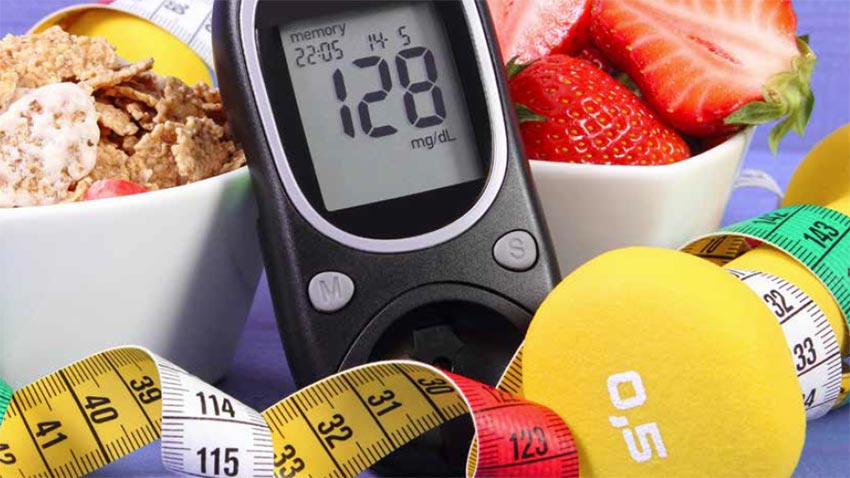“People ask me if diet or exercise is more important when you have diabetes,” said Reinhart. “My response is: ‘You can’t fly a plane without two wings!’ Both are vital in maintaining not only healthy glucose levels but healthy blood vessels. Exercise is the fountain of youth.”
As people age, it’s easy to mistake symptoms of type 2 diabetes as simply part of the process of getting older. Increased thirst, increased urination, fatigue, poor healing of wounds and vision changes such as blurred vision or no longer needing corrective lenses are all signs of diabetes which often get brushed aside. Even if you suspect you may have the disease, it can be difficult to diagnose.
Cathy Reinhart, a registered nurse for Trident Health Systems’ Diabetes Resource and Education, recommended visiting your primary care doctor for diagnosis and referral to a specialist if necessary.
“Yearly physicals do detect cases of diabetes, but many times it takes years for the fasting glucose to increase to the level that is diagnostic of diabetes,” she explained. “Typically, the diagnosis is made with a fasting glucose level, but, in many cases, the first abnormalities of glucose may occur after eating, so it can be difficult to detect.”
In addition to being complicated to detect and diagnose, some diagnoses take a long time to pinpoint.
“If a person is having symptoms and their fasting glucose level is normal or slightly elevated, an additional blood test called a hemoglobin A1c is useful in determining an estimated average glucose level over the previous two to three months,” she said.
Depending on the glucose and A1c levels, diabetes can be managed with oral medications, injections, diet and exercise. A certified diabetes educator can assist patients with managing diabetes.

In addition to widely known insulin injections, injectable or oral medications also are available. A set of guidelines helps general practice doctors guide their patients to decide whether to start on insulin or on oral or injectable medicine. Those with type 2 diabetes might be able to get off of insulin with a healthy diet and exercise.
“I am upfront with my patients about insulin therapy,” said Reinhart. “No longer needing insulin is a possibility, but for those who continue to need it, that doesn’t indicate the patient has failed in managing their diabetes. It just means the diabetes has changed.”
A healthy diet also plays a key role in managing type 2 diabetes. Meal planning, basic healthy eating practices and a consistent carbohydrate diet can help. As the main energy source for the body, too many carbohydrates can cause hyperglycemia in people with diabetes. A heart-healthy diet – one that emphasizes fruits, vegetables and whole grains and limits unhealthy fats – is recommended because diabetes can more than double the risk of a heart attack or stroke.
“A diet for a senior with diabetes should be about small changes that they can stick with for the rest of their life,” she said. “Diets fail. Making healthier choices most of the time and controlling portions so that all foods can fit are what creates a successful ‘diet.’ Working with a CDE and/or registered dietitian is invaluable so that they can individualize a meal plan to fit the person’s needs and preferences.”
A healthy exercise routine is equally important in managing diabetes. It is recommended that seniors work toward 30 minutes of aerobic exercise five days a week, along with strength training.
While being active is easier said than done in the face of health problems that can develop with age, it’s never too late to begin an exercise routine. Statistics show that most people over the age of 65 don’t maintain a healthy lifestyle, and, for many, that is because they don’t know where to begin or are afraid of taking on too much. Whether you have never exercised regularly or if you used to be active and find it hard to come back from a break, small changes can lead to big differences in your health. Exercise as simple as walking or joining a dance class is a good way to get moving.
There is no cure for diabetes, but in most cases it can be controlled with insulin, medication, a healthy diet and consistent exercise.
“Diabetes is a chronic disease. Controlling it can be challenging and hard work, but most of us have worked hard at something to achieve a goal. It is totally doable!” Reinhart smiled. “The goal is to improve quality of life and decrease the risk of sometimes devastating complications associated with diabetes. Just take it one day at a time.”








